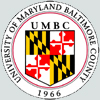| |||||||||||||||||||
Tips:  Range on the Protein: Protein ID Protein Position Domain Position: 
|
|---|
Weblogos are Copyright (c) 2002 Regents of the University of California
| DMDM_info@umbc.edu | 1000 Hilltop Circle, Baltimore, MD 21250 | Department of Biological Sciences | Phone: 410-455-2258 |




 First (N-terminal) immunoglobulin (Ig)-like domain of the nectin-like molecules Necl-1 - Necl-3 (also known as cell adhesion molecules CADM3, CADM1, and CADM2 respectively). Ig1_Necl-1-3_like: N-terminal immunoglobulin (Ig)-like domain of the nectin-like molecules Necl-1 (also known as cell adhesion molecule 3 (CADM3)), Necl-2 (CADM1), and Necl-3 (CADM2). At least five nectin-like molecules have been identified (Necl-1 - Necl-5). They all have an extracellular region containing three Ig-like domains, a transmembrane region, and a cytoplasmic region. The N-terminal Ig-like domain of the extracellular region belongs to the V-type subfamily of Ig domains, is essential to cell-cell adhesion, and plays a part in the interaction with the envelope glycoprotein D of various viruses. Necl-1, Necl-2, and Necl-3 have Ca(2+)-independent homophilic and heterophilic cell-cell adhesion activity. Necl-1 is specifically expressed in neural tissue, and is important to the formation of synapses, axon bundles, and myelinated axons. Necl-2 is expressed in a wide variety of tissues, and is a putative tumour suppressor gene, which is downregulated in aggressive neuroblastoma. Necl-3 accumulates in central and peripheral nervous system tissue, and has been shown to selectively interact with oligodendrocytes. This group also contains Class-I MHC-restricted T-cell-associated molecule (CRTAM), whose expression pattern is consistent with its expression in Class-I MHC-restricted T-cells.
First (N-terminal) immunoglobulin (Ig)-like domain of the nectin-like molecules Necl-1 - Necl-3 (also known as cell adhesion molecules CADM3, CADM1, and CADM2 respectively). Ig1_Necl-1-3_like: N-terminal immunoglobulin (Ig)-like domain of the nectin-like molecules Necl-1 (also known as cell adhesion molecule 3 (CADM3)), Necl-2 (CADM1), and Necl-3 (CADM2). At least five nectin-like molecules have been identified (Necl-1 - Necl-5). They all have an extracellular region containing three Ig-like domains, a transmembrane region, and a cytoplasmic region. The N-terminal Ig-like domain of the extracellular region belongs to the V-type subfamily of Ig domains, is essential to cell-cell adhesion, and plays a part in the interaction with the envelope glycoprotein D of various viruses. Necl-1, Necl-2, and Necl-3 have Ca(2+)-independent homophilic and heterophilic cell-cell adhesion activity. Necl-1 is specifically expressed in neural tissue, and is important to the formation of synapses, axon bundles, and myelinated axons. Necl-2 is expressed in a wide variety of tissues, and is a putative tumour suppressor gene, which is downregulated in aggressive neuroblastoma. Necl-3 accumulates in central and peripheral nervous system tissue, and has been shown to selectively interact with oligodendrocytes. This group also contains Class-I MHC-restricted T-cell-associated molecule (CRTAM), whose expression pattern is consistent with its expression in Class-I MHC-restricted T-cells. No pairwise interactions are available for this conserved domain.
No pairwise interactions are available for this conserved domain.







